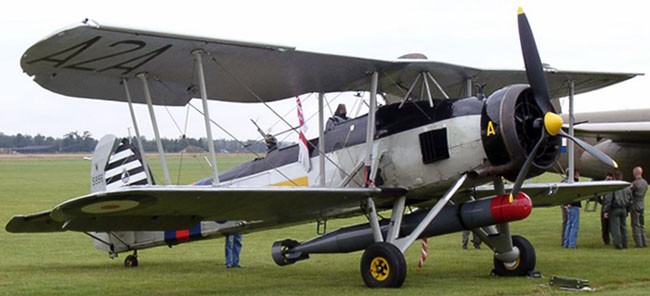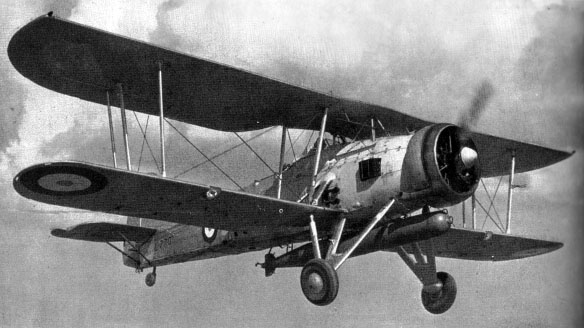Fairey Swordfish
Today, the bite of a dinosaur. The University of Houston's College of Engineering presents this series about the machines that make our civilization run, and the people whose ingenuity created them.
Navies began looking into the idea of using ship-based airplanes very soon after the Wright Brothers. The Japanese and British pioneered the idea. Japan launched ship-based seaplanes against the Chinese in 1914. That same year the British launched the Ark Royal. It was the first true flat-top carrier.
But serious work on aircraft carrier technology began after WW-I. And it soon became clear that sea-based airplanes had to be a new species. You couldn't just send conventional land-based planes to sea. So, in 1933, the Fairey Aviation Company began testing a new torpedo/reconnaissance plane for the new carriers.
Their test models evolved into the Fairey Swordfish, and it saw combat all through WW-II. Now the strange part: This new state-of-the-art machine was a biplane with struts and guy wires. Except for the nose and panels around its two open cockpits, it was entirely covered by fabric. It had a fixed landing gear. If we look at it casually, we see an old WW-I airplane.

It was big -- 46-foot wingspan. It carried a pilot, observer, rear gunner, and two tons of payload. Still, it was hardly faster than the old SPADs and Nieuports, and it looked a lot like them as well. Its original wooden propeller was soon replaced with a metal one, but it remained an array of struts and wires.
Its slow speed did serve it well in carrier takeoffs and landings. And the Swordfish's first battle signaled the end of the era of the big battleship. On November 11th, 1940, 29 carrier-based Swordfish torpedo bombers attacked the Italian fleet at Taranto. That was to be Italy's Pearl Harbor. Five battleships and a cruiser were either sunk or seriously damaged. Those antediluvian planes changed the course of the Mediterranean war.
The most famous Swordfish action occurred far to the north a year later. The Germans had created a new state-of-the-art battleship. The fifty-thousand ton Bismarck, with its fifteen-inch guns set out from Danzig (now Gdansk)to attack British shipping.
A Spitfire located it, and a large naval force went after it. The British chased the Bismarckup the coast of Norway, all the way over Iceland and finally caught it west of France. Among the pursuing ships was a next-generation aircraft carrier, a new Ark Royal launched in 1938. Her Swordfish proved to be too slow for the settings on Bismarck's guns. They got through, wrecked the ship's rudder, and left it to be pounded to death by British guns.
Twenty-four hundred of the rugged Swordfish were built. Those biplanes were still being made while Germany was using the first jet fighters in combat. Swordfishes sank submarines, scouted, and served countless other roles throughout the war. Perhaps it's the old story of the tortoise with the hare. For less can sometimes be more. We need remember how much we can accomplish with the intelligent use of less than cutting-edge technology.
I'm John Lienhard at the University of Houston, where we're interested in the way inventive minds work.
W. A. Harrison, Fairey Swordfish in Action. (color by Don Greer, Illustrations by Andew Probert and Richard Hudson) (Carrollton, TX: Squadron/Signal Publications, Inc., 2001), No. 175.
M. Sharpe, Biplanes, Triplanes and Seaplanes. (New York: Barnes & Noble Books, 2000): pp. 168-173.
See also the Wikipedia pages on the Fairey Swordfish, Aircraft Carriers, German Battleship Bismarck, and the Battle of Taranto.
The two Swordfish photos are courtesy of Wikipedia Commons.
